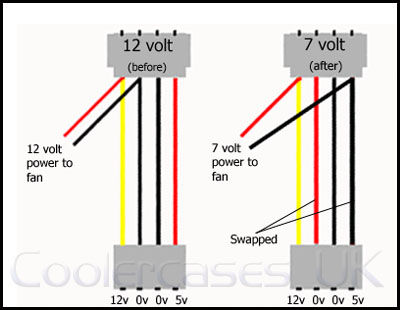That's the cart before the horse - discovered by some users who didn't want to use real fan speed controllers.
You cannot get 7VDC from any
ATX compliant PSU. The ATX Form Factor Design Guide from June 2018 is quite clear. The only voltages are +12VDC, +5VDC, +3.3VDC, -12VDC (optional), and +5Vsb.
There are no "raw" voltages from an ATX compliant PSU. The ATX Form Factor
requires all output voltages meet or exceed very tight regulation, as well as good ripple suppression. The ATX Form Factor standard stipulates those voltages must be regulated to not exceed ±5% tolerances.
Acceptable tolerance maximums:
12VDC ±5% = 11.4 to 12.6VDC
5VDC ±5% = 4.75 to 5.25VDC
3.3VDC ±5% = 3.14 to 3.47VDC
If a PSU is outputting 7V, it is either faulty, modified and/or proprietary and thus, not ATX compliant.
I would urge anyone considering modifying their ATX compliant PSUs to NOT do it. Note it involves cross-connecting output "rails" (that is, not just that one connector). Do you really want to risk applying abnormally high voltages to your motherboard?
June 2018 ATX Form Factor Design Guide direct download link.







 It is still modifying the output of the PSU. And since those cables do not isolate themselves from others on that same rail, it is still cross-connecting the outputs - not a good idea.
It is still modifying the output of the PSU. And since those cables do not isolate themselves from others on that same rail, it is still cross-connecting the outputs - not a good idea.